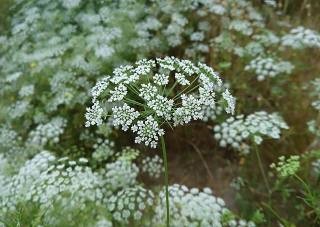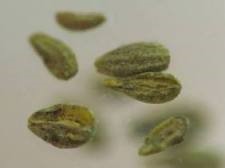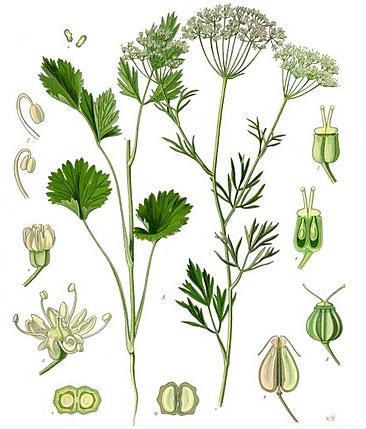Anise
Common Names: Anise, Aniseed
Scientific Name: Pimpinella anisum
Climate: Warm, temperate and cold
Plant Description: Anise is an annual plant that reaches an average height of 30–50 cm. The plant is completely covered with fine hairs. The root is thin and spindle-shaped, the stem upward, round, carved, ribbed, and branched upward. In midsummer, the thin stems are crowned with umbrella-shaped clusters of small white flowers with 5 petals each. They become seed-shaped fruits. The fruit is a schizocarp (a dry fruit that splits into single-seeded parts when ripe), ovoid pear shaped, somewhat compressed on one side. THe fruit is characterized by a strong aromatic flavor. The leaves at the base are simple, slightly lobed, 2 to 5 cm long; while at the top of the stem they are pinnate and more deeply divided.1
The origin of anise is the eastern Mediterranean region. But today it is cultivated all over the world.
 Cultivation: Anise should be planted in full sun. It tolerates drought, but not excess watering, it does not support watery or very humid places. It prefers loose, slightly acidic, airy, spongy soils with organic matter. Anise is a plant that requires deep soils, so if the objective is to plant in pots, it is necessary to plant 50 cm deep.
Cultivation: Anise should be planted in full sun. It tolerates drought, but not excess watering, it does not support watery or very humid places. It prefers loose, slightly acidic, airy, spongy soils with organic matter. Anise is a plant that requires deep soils, so if the objective is to plant in pots, it is necessary to plant 50 cm deep.
The seeds are sown in spring, they are planted at a maximum depth of 1-2 cm. Water frequently but with little water. The seeds will germinate from 10 to 30 days. When they are born they are allowed to take root for another 10 days. When transplanting to the ground, a distance between plants of 20 to 25 cm must be allowed. Weeding is important periodically or when necessary. Pruning the plant can be done when the plant reaches about 20 cm in height.
Leaves and flowers can be collected throughout the life of the plant. When the anise is about 4 months old (about a month before the flowers bloom), the plants could be cut and dried, or you can allow the plants to go through their entire growing cycle in order to harvest the seeds.
Seeds require more than 100 frost-free days to reach harvest and must be collected while green. Should be dried in a warm place. Once dried they are threshed and stored in clean and hermetic containers.
 Uses: The seed helps reduce stomach gases, promotes digestion, improves appetite, relieves colic, including colics and nausea among nursing babies.
Uses: The seed helps reduce stomach gases, promotes digestion, improves appetite, relieves colic, including colics and nausea among nursing babies.
Anise water stimulates milk production in nursing mothers.
Anise is very good against a strong and dry cough, and when the phlegm cannot get out, as well as helps curing respiratory problems associated with the flu.
It can stimulate the beginning of menstruation when it is taken as an infusion.
Eliminates fungi.
Helps to relieve fluid retention.
Important note: Star anise (which is another plant) is neurotoxic so it should not be given to babies and it is contraindicated to be taken by nursing mothers. Do not confuse these two plants!
References:
- Handbook of Herbs and Spices (Second edition), Volume 2 Woodhead Publishing Series in Food Science, Technology and Nutrition 2012, Pages 138-150
En español: Anís

